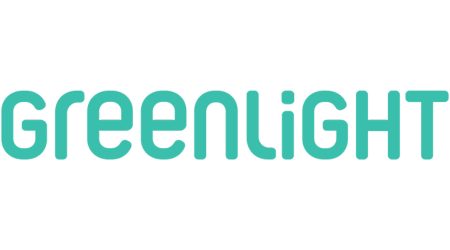Greenlight costs $5.99 per month for its most basic plan, and Current’s teen account is free to open and maintain. If you want a free debit card for your teen, Current might win you over, but Greenlight’s savings rewards, granular parental controls, educational content and extra safety features can make it worth the cheddar.
Greenlight vs. Current: A quick comparison
How features compare
| Greenlight | Current teen banking | |
|---|---|---|
Free trial | No | No |
Free reloads | Yes | Yes |
Custom spending limits | Yes | Yes |
Educational quizzes and game | Yes | No |
Chore assignment and allowance tracking | Yes | Yes |
Design custom debit card | Yes | No |
Investing features | Yes | No |
Credit building opportunities | Coming Soon | No |
Savings rewards | Yes | No |
Cashback rewards | Yes | No |
$0 ATM withdrawals | Yes | Yes |
Free replacement debit card | No | No |
The similarities
Greenlight and Current are both mobile-only banking options. They’re also fintech companies, providing banking services through their partner banks.
Both Greenlight and Current have no specific age requirements, but Current is specifically designed with teens in mind. Current and Greenlight both offer chore and allowance tracking, tools for saving, customizable spending controls and free card reloads.
Which card is worth the cost?
Current is free to open and maintain and doesn’t have any paid membership plans. Parents are required to open a regular Current account to monitor and open the kids’ account, but it’s also free.
Greenlight costs at least $5.99 per month for Greenlight Core, giving you up to five debit cards per plan. If you want more safety features, the price can reach $9.98 for Greenlight Max or $14.98 per month for Greenlight Infinity. The higher-tier plans come with higher savings rewards, cash back, identity theft monitoring, priority customer support and family location sharing.
If you don’t mind paying a little extra, Greenlight’s additional perks could make it worth its cost. But if affordability is what you’re after, Current is the clear winner.
Which one’s safer?
Both Greenlight and Current’s accounts are covered under FDIC insurance up to the typical amount of $250,000. In the unlikely event of a bank failure, funds are protected up to that amount.
When it comes to overall safety features, Greenlight has more to offer, especially with Greenlight Infinity for $14.98 per month. You’ll get things like cell phone coverage for up to five phones, identity theft monitoring, family location sharing, SOS button with 911 dispatch and car crash detection.
Greenlight vs. Current: Which one is better?
Comparing features alone, Greenlight takes the win. You’ll get significantly more features than you would with Current, which includes financial games to teach your kid about money, an optional investing platform, granular spending controls, cash back and savings rewards. But if you just need a no-frills free teen banking option with chore and allowance tracking and strong parental controls, Current comes out on top.
Greenlight is best for:
- Safety features
- Cash back and savings rewards
- Store- and category-level spending limits
- Money games and education
Current is best for:
- No monthly fee
- Custom spending limits
- Savings round-ups
Alternatives to Greenlight and Current
There are many other kids’ banking options to choose from.
- Step. Just like Current, Step doesn’t have any monthly fees and is well-suited for teens and young adults. It’s a secured card that works like a debit card with credit-building opportunities, cashback rewards, savings rewards, educational features and more. However, Step doesn’t have chore or allowance tracking.
- Acorns Early (formerly GoHenry). Greenlight and Acorns Early are very similar in terms of pricing and features. Acorns Early offers gamified educational content, investing, chore and allowance tracking, custom spending limits and more. But unlike Greenlight, Acorns Early only offers one debit card per plan and is only available to kids between six and 18 years old.
- BusyKid. A top contender, BusyKid costs $4 per month and offers an investing platform at no extra cost. You’ll also get chore and allowance features, savings and allows kids to donate to charity. However, there are no educational games or courses.
See how even more cards stack up:
Ask a question
More guides on Finder
-
Alternatives to GoHenry (Now Acorns Early)
GoHenry is now Acorns Early. If you’re looking for a GoHenry alternative, try Greenlight, Step, Current, Modak Makers or Chase First.
-
How to save money as a teenager
Setting a savings goal, creating a budget and opening the right savings and checking accounts are top ways for teens to save money.
-
5 fun ways to boost your kids’ savings
These saving methods can help teach and motivate kids to save.
-
7 Best Free Debit Cards for Kids and Teens in April 2025
Some of the best free debit cards for kids that don’t charge any monthly fees include Step, Current, Cash App, Axos, Chase, Revolut and more.
-
Acorns Early (formerly GoHenry) promo codes for 2024
Get an extra month free with this Finder-exclusive promo code for a limited time, plus see other deals and special offers from Acorns Early.
-
GoHenry (Now Acorns Early) vs. Greenlight: Which Kids’ Card Is Better?
Greenlight and Acorns Early (formerly GoHenry) are strong kids’ debit cards, but Greenlight has a slight edge because of its extra features and competitive price.
-
Best Debit Cards for Kids
Compare the best kids’ prepaid and debit cards designed for ages 13 and under.
-
Greenlight Debit Card for Kids Review
See our first-hand review of the Greenlight card to see if the $5.99 monthly fee makes sense for your family.
-
Best savings accounts for kids in April 2025
Set your little ones up for financial success with a kids’ savings account.
-
6 Best Credit Cards for Teens
Compare the best credit cards that minors under 18 can have as authorized users.



